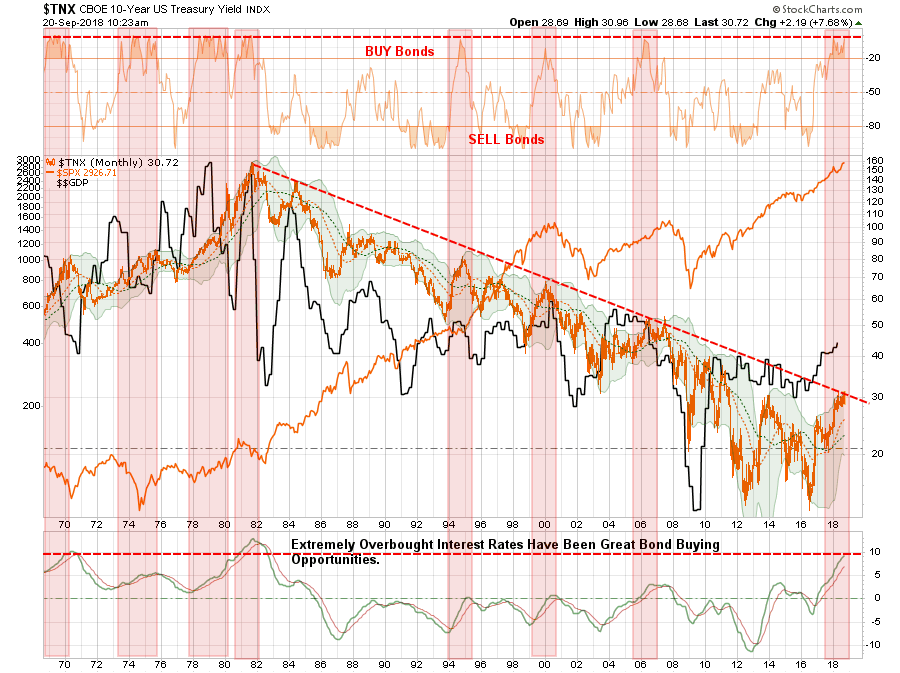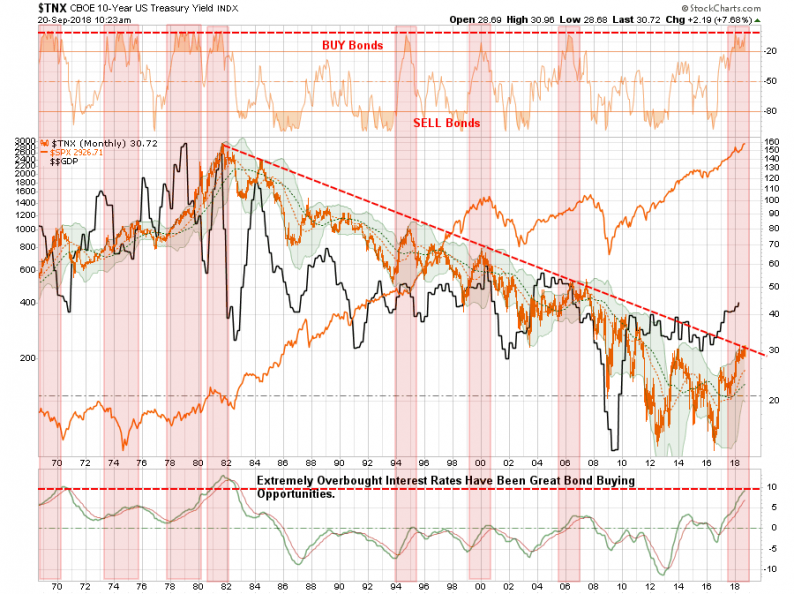An interesting thing has begun to occur in the market which is more a symptom of exuberance than prudence as there seems to be nothing that can derail the market advance to new highs. However, as Doug Kass noted recently in his diary, the ingredients to shock market participants are already in place.
Speculative activity is on the rise (materially so in the case of Tilray (TLRY) and others in the space).
Investor complacency (not a soul, save permabears, are looking for anything like a large markdown in market).
Rising interest rates — with the pace of the yield climb now accelerating to the upside.
Trade and tariff risk is rising.
An extreme change in the market structure — much like portfolio insurance in 1987, (ETF and Quant strategies and products dominate the market) — in which participants are all on the same side (long) of the boat.
Social unrest as the benefits of monetary and fiscal policies failed to trickle down.
Weak market seasonals.
Technical divergences.
The market is currently ignoring, in my opinion, two of the biggest risks to the fundamental underpinnings of the market which are earnings growth and valuation.
While the market has been rising on stronger rates of earnings growth, due primarily to tax cuts and share buybacks, that effect will begin to roll off in the months ahead. Tariffs and higher interest costs are a direct threat to bottom line profitability, particularly when combined with higher labor costs.
Today, however, I want to focus on the interest rate issue as it is the biggest threat the markets currently face if rates do indeed continue to rise further.
But this is THE chart you should be paying attention to:

There are several important points to note in the chart above:
In the past 40-years, there have only been seven (7) other occasions where rates were this overbought. In each case, it was a great time to buy bonds and sell stocks. (When rates got oversold, it was time sell bonds and buy stocks.)
There were only two (2) other periods where rates were this extended above their long-term moving averages. The one that occurred between 1980-1982 began the long-term decline in bond prices.
Economic growth has peaked every time rates got this extended. (Which shouldn’t be a surprise.)
Whenever rates have previously pushed 2-standard deviations of their 2-year moving average – bad things have tended to occur such as the Crash of 1974, Crash of 1987, Long-Term Capital Management, Russian Debt Default, Asian Contagion, Dot.com crash, and the Financial Crisis.










Leave A Comment